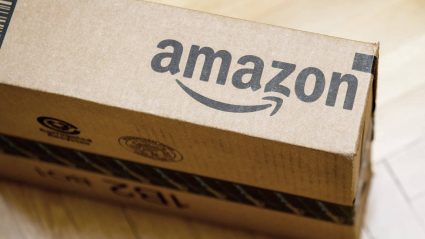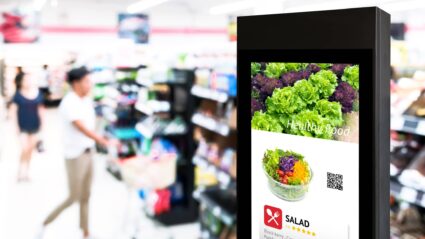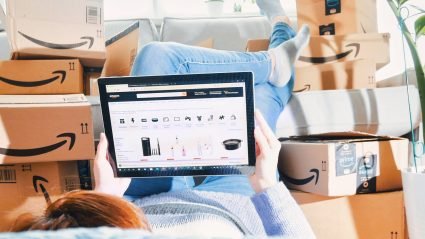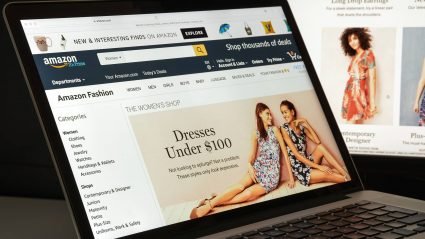Amazon Prime Day is earlier than ever this year (from June 21 through to June 22 to be exact), and many brands are in a tailspin working to ensure that the famous two-day sales extravaganza is a success—and for good reason.
Prime Day hasn’t shown any signs of slowing down: last year, $10.4 billion estimated sales were generated on Prime Day, up 45.2% from 2019.
In the weeks leading up to the big event, we’ve picked up on a few key trends and unique opportunities that we think brands can leverage to get in front of new customers, maximize conversions, and make this year their most successful Prime Day yet.
Brands can take advantage of the excitement around the event by crafting integrated shopping experiences personalized to their consumers’ needs.
This takes more than tactical efficiency; it requires strategic and holistic planning to get all of your core marketing channels (retail, search, display) to work together seamlessly.
So, without further ado, let’s jump right in.
1. Prioritize retail stabilization and extended promotional outreach
As we like to say in Texas, just because a chicken has wings doesn’t mean it can fly. What we mean is that, while a strong marketing budget and strategy are critical to success, if your brand isn’t truly retail-ready, you’re never going to reach your full potential.
You need to build a powerful cross-channel upper funnel strategy that boosts brand awareness and captures new users efficiently if you want to capitalize on the demand generated by Prime Day. Here are some of our top recommendations to consider:
- Optimize your product listings: It’s important to account for the following factors so that your top-selling product listings can reach (and convert) the greatest number of consumers throughout the two-day event:
- High-quality images that adhere to Amazon standards
- Clear copy for titles, bullet points, and descriptions
- Strong descriptions that highlight key attributes and product line information
- A steady number of customer reviews to boost credibility
- Manage inventory and shipments: Your inventory position is critical. Since running out of stock on a popular product can affect your seller performance metrics, brands must ensure they have proper inventory levels to account for higher demand. Consider promoting products that are truly retail-ready, and put buffers in place for potential shipping carrier delays.
- Ramp up your marketing efforts: Coupons and promotions can also be powerful tools for accelerating ad sales. We recommend supporting at least one product through either a lightning deal, price discount, or coupon—and running the promotion either a few days before or after June 21 to 22 to gain further reach and exposure.
- Utilize paid search and social ads: Many platforms, including Facebook, Bing, and Google, have capabilities that enable linking directly to Amazon. Brands may be hesitant to take this approach, since it takes visibility away from their own site, but it may be worth considering as part of your holistic Prime Day strategy to boost traffic. In addition, brands can leverage Amazon’s attribution console to help effectively measure sales and orders from their non-Amazon marketing channels.
2. Lean on powerful search strategies to boost brand awareness and visibility
Once your retail marketing foundation is set, and you’ve identified the products you’d like to run promotions for, it’s time to overlay a dynamic search strategy to maximize your in-aisle presence on Amazon.
We recommend increasing your ad spend during the lead-up to Prime Day, as well as adjusting CPC strategies during the event’s peak times, to help maximize your brand’s impact and ability to reach more customers.
In general, your ad budget for the entire month of Prime Day (June) should increase by at least 35% compared to the surrounding months. While all major product categories typically see a sales lift during Prime Day, some categories perform better than others. When making budget decisions, it’s important to lean on historical performance data when considering which categories you want to invest the most in.
Brands should also take advantage of the spike of traffic (and increased conversion rates) around Prime Day by using lead-in and lead-out windows. This includes both the 14 days prior to and after the two-day shopping event.
We recommend increasing campaign bids by at least 25% during both the lead-in and lead-out periods (versus the month prior), and by 200% during the event’s peak times no matter what vertical you sell in.
While this is a general best practice, it certainly doesn’t mean you can’t differentiate by category or industry. For instance, if you’re a CPG brand, you might be aiming to double your average spend rate. On the other hand, if you’re in the electronics vertical, increasing your daily spend rate by up to 800% during Prime Day could also be reasonable.
In addition to identifying the optimal bids and budget, now’s the time to take advantage of your access to Amazon’s advanced PPC marketing solutions like Sponsored Brand ads to amplify the reach of your promoted products. Let’s take a quick look at how to get started:
- Update the featured Amazon Standard Identification Numbers (ASINs) to include the products you want to promote.
- Link to your Amazon Storefront or custom Amazon landing page that showcases these items.
- Deploy video ads geared towards key category searches to help your product stand out in the search results.
It’s important to note that cross-selling to adjacent categories on Amazon is rarely a good use of ad dollars with the exception of peak windows such as Prime Day.
3. Implement a comprehensive display strategy to drive full funnel growth
While search advertising brings your products to the front of the aisle (and adjacent aisles), helping boost retail presence and secure conversions—for truly forward-thinking brands, the goal is to provide an integrated, seamless shopping experience.
So, how can you get shoppers to your corner of the store no matter where they are?
Enter Amazon demand-side platform (DSP).
How Amazon DSP works
Amazon DSP ads use Amazon’s first-party ecommerce data to programmatically reach highly relevant shoppers at scale via Amazon’s owned and operated properties (Amazon.com, Amazon Mobile App, etc.), Amazon Publisher Services, and major ad exchanges.
Depending on your specific campaign goal, you can retarget shoppers that have visited the Amazon detail pages of your products (and your competitor’s products), or target larger audiences who fit into pre-defined lifestyle and in-market segments. More recently, Amazon opened up contextual targeting to reach other unique-to-Amazon audiences as they’re actively browsing across devices and formats.
This advanced programmatic solution is the next step in developing a comprehensive, full funnel marketing strategy on Amazon. Adding display advertising on top of Sponsored Brand ads broadens your brand’s ability to engage shoppers with highly relevant, personalized experiences across the funnel—from brand awareness to consideration and purchase.
Our approach to a smart Amazon DSP strategy
To make the most of your available budget, we recommend taking a limited product approach that focuses on promoting high-demand items. Additionally, your DSP flight should ideally be launched at least 30 days prior to Prime Day in order to give the system time to carry out significant optimizations and improve efficiencies, so it may be a little late if you haven’t already implemented it this year.
But Prime Day isn’t the only time you can capitalize on increased demand on Amazon: Black Friday, Cyber Monday, and the Q4 holiday season are great opportunities to leverage increased traffic and larger audiences with DSP retargeting to provide an “always-on” display strategy that can be maintained into 2021 and beyond.
What to do post-Prime Day 2021
Once the Prime Day dust settles, we recommend analyzing performance at the product and tactical level. Utilize forward-thinking metrics including new-to-brand, branded searches, TACoS (total advertising cost of sale), cost per acquisition, and lifetime value to identify the strongest performing products and strategies. This data can be used for evergreen flights, but more critically, during the next peak window: Black Friday and Cyber Monday.







Responses